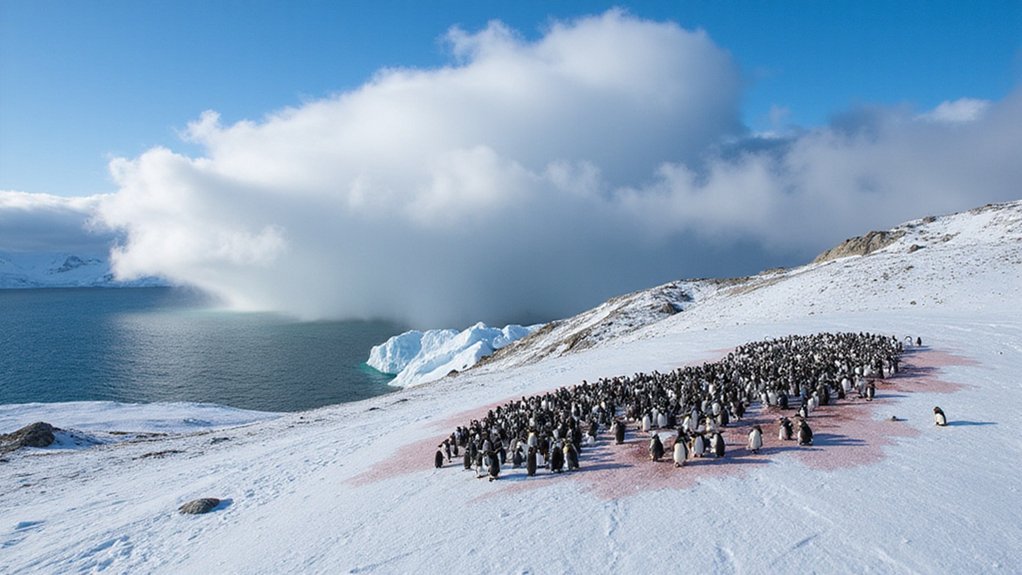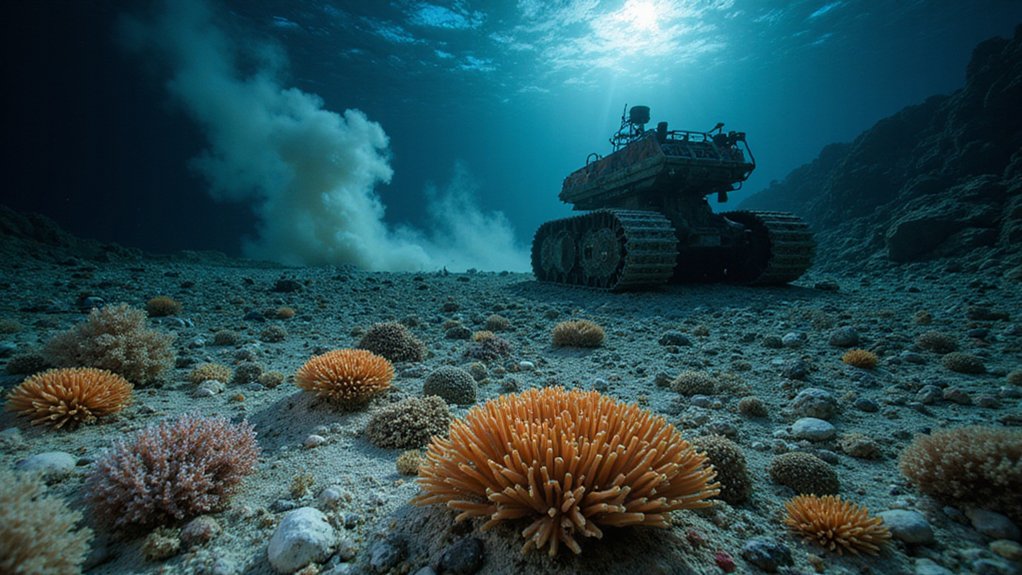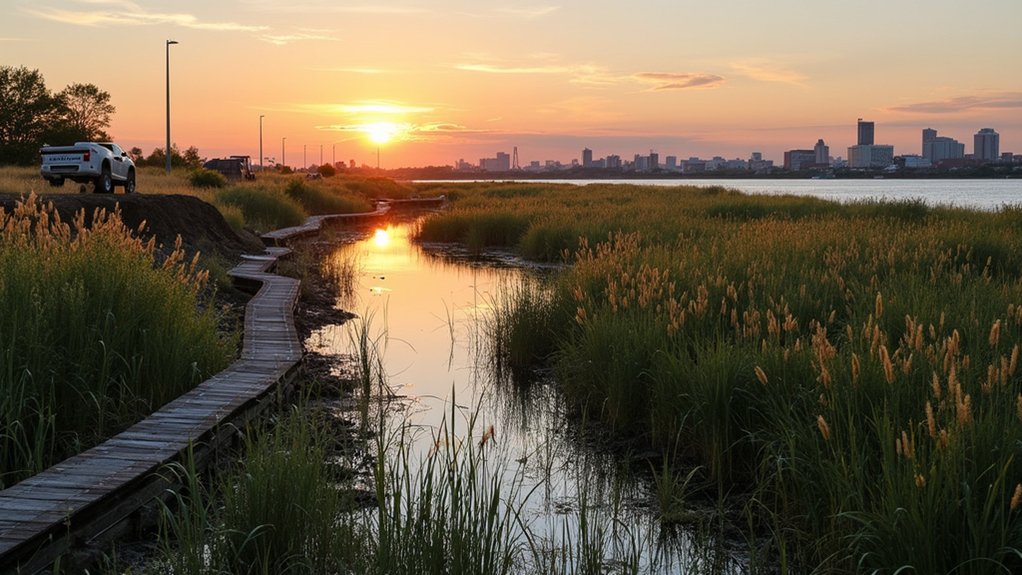Scientists discovered penguin poop creates clouds that cool Antarctica. The guano releases ammonia that mixes with ocean gases, forming aerosols that build reflective clouds bouncing sunlight back to space. University of Helsinki researchers measured ammonia levels 1,000 times normal near colonies, with one event creating 16,000 particles per cubic centimeter. It’s nature’s grossest air conditioner. Problem is, fewer penguins mean less poop, less clouds, more warming—and the cycle gets worse.
When scientists discovered that penguin poop helps cool Antarctica, they probably didn’t expect to be taken seriously. But here we are. Turns out those adorable waddlers have been running their own climate control system this whole time.
The research, published in Communications Earth & Environment this May, reveals something bizarre. Penguin colonies create massive atmospheric particle hotspots. How? Through their guano—that delightful mixture of feces and urine that comes out of their cloacas. The stuff reeks of ammonia, and that’s exactly what makes it so important.
Penguin guano reeks of ammonia, and that’s exactly what makes it Antarctica’s secret weapon against climate change.
Matthew Boyer from the University of Helsinki led the study. He and his team found that when penguins release all that ammonia into the air, it doesn’t just stink up the place. It actually combines with sulfur-bearing gases from phytoplankton. This chemical reaction creates aerosols, which are basically tiny particles that help clouds form. More particles mean bigger, more reflective clouds. And reflective clouds? They bounce sunlight away from Earth’s surface.
Antarctica makes the perfect laboratory for this research. No humans mucking things up. No vegetation interfering. Just penguins, their poop, and the atmosphere doing their thing. At Marambio Base, researchers measured ammonia levels reaching 1,000 times baseline values near a colony of 60,000 Adélie penguins. One particle formation event produced over 16,000 particles per cubic centimeter, demonstrating the massive atmospheric impact of these colonies.
Ken Carslaw from the University of Leeds confirms these observations matter. They help scientists improve how clouds are represented in climate models. Because apparently, we’ve been ignoring the cooling power of bird droppings all along.
Here’s where it gets concerning. Some Adélie penguin populations have crashed in recent years. Fewer penguins mean less guano. Less guano means fewer cooling clouds. Scientists worry this could create a feedback loop—warming leads to fewer penguins, which leads to more warming. Nature’s irony at its finest.
The implications are stark. Penguin colonies aren’t just cute tourist attractions. They’re part of Antarctica’s natural air conditioning system. Imperial Shags contribute too, but penguins are the main players here.
Researchers want to quantify exactly how much cooling these guano-induced clouds provide. They’re also hunting for other bird colonies that might play similar roles. Because apparently, excrement-based climate regulation is a thing now. Who knew that protecting penguins meant protecting Antarctica’s secret cooling system?
References
- https://www.smithsonianmag.com/smart-news/penguin-poop-helps-drive-cloud-formation-over-antarctica-according-to-a-new-study-180986686/
- https://scienceblog.com/penguin-poop-powers-antarctic-cloud-formation/
- https://phys.org/news/2025-05-climate-power-penguin-poo.html
- https://www.eurekalert.org/news-releases/1084445
- https://dailygalaxy.com/2025/05/a-disgusting-phenomenon-could-save-antarctica/








